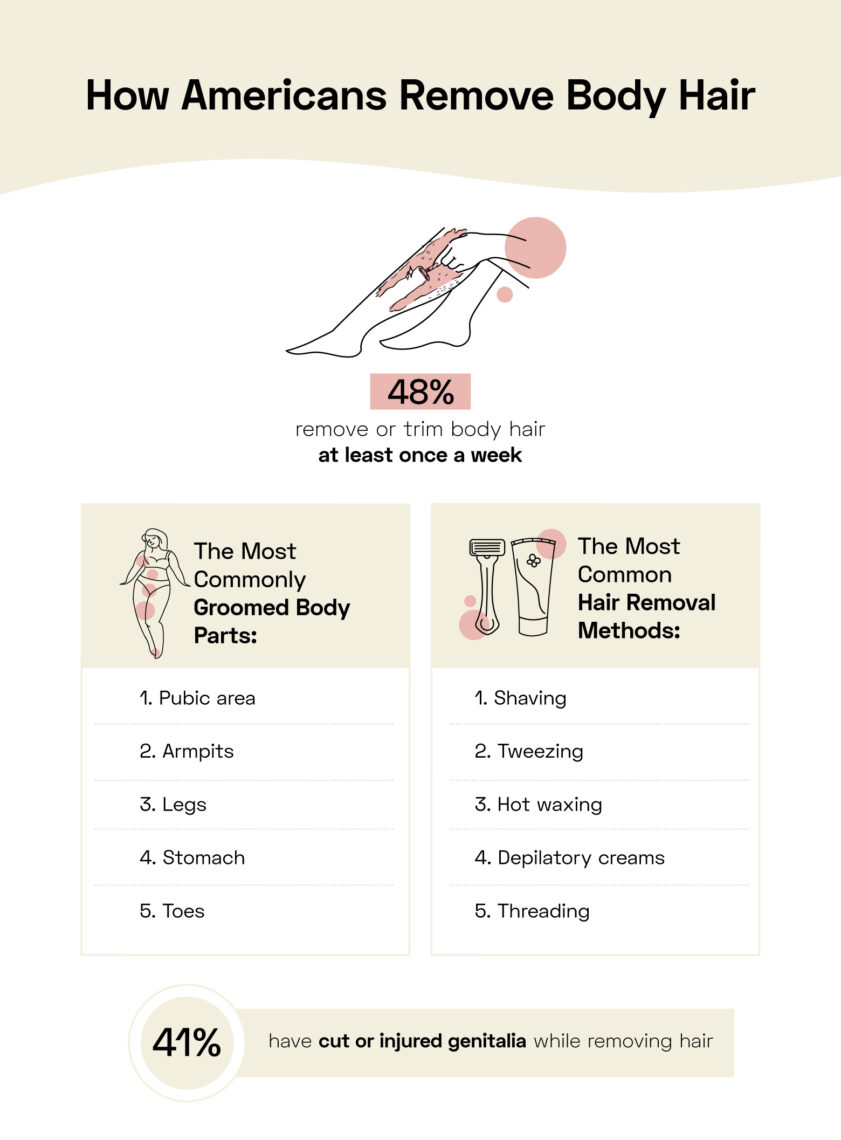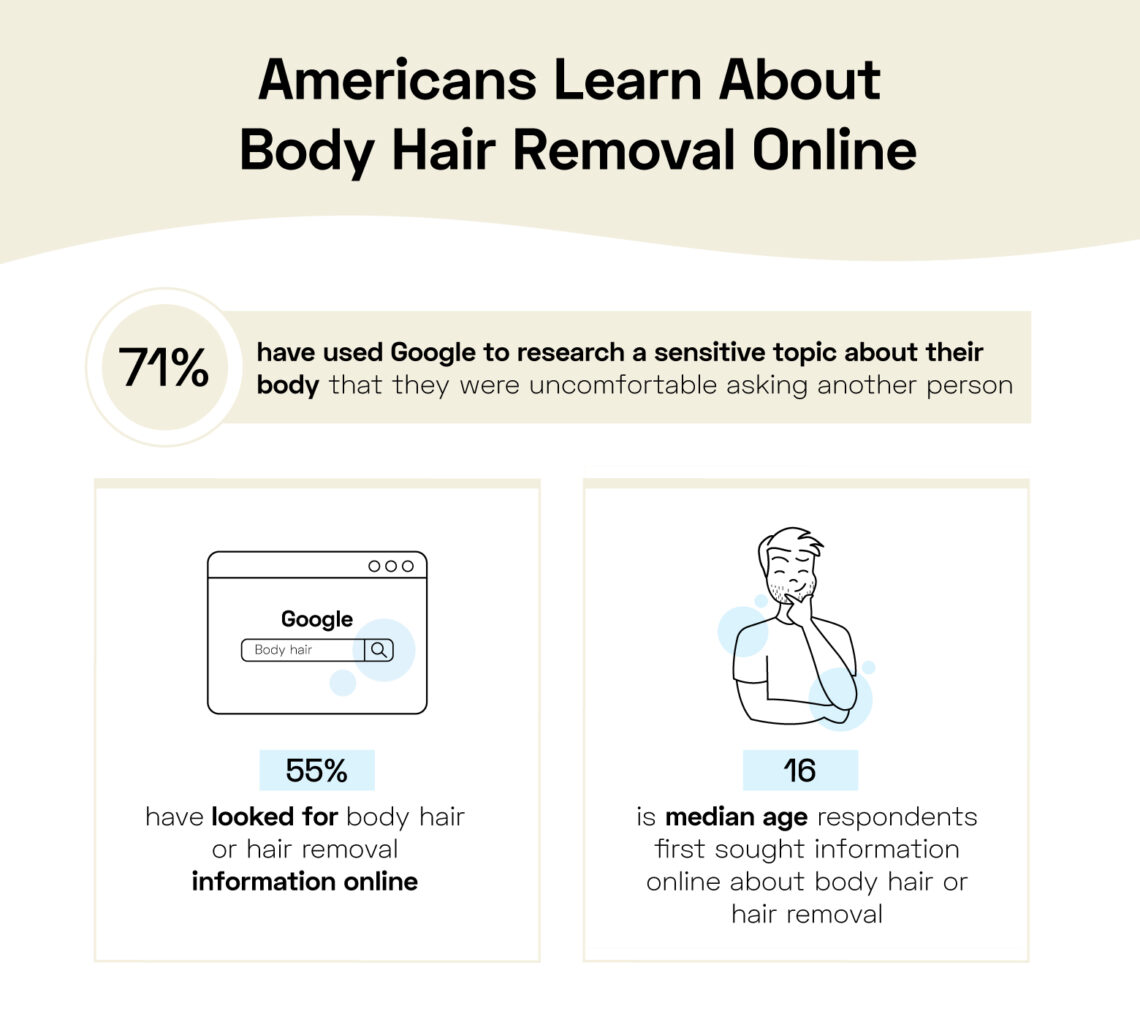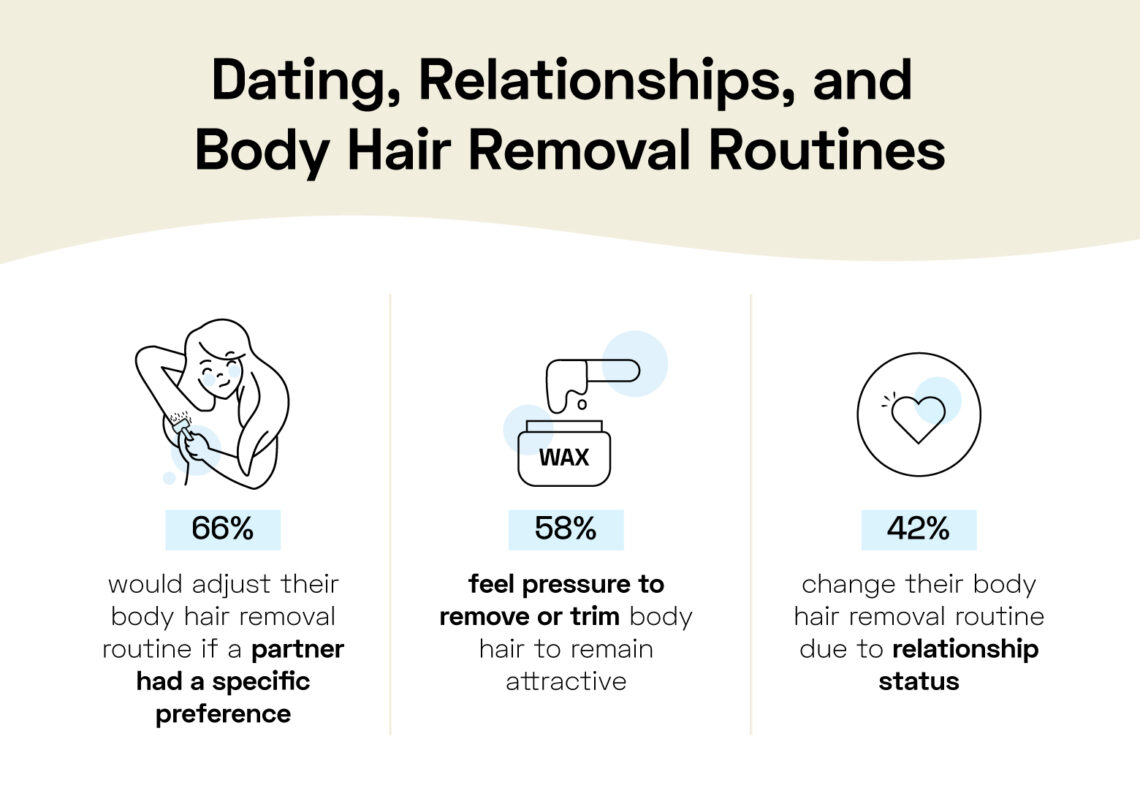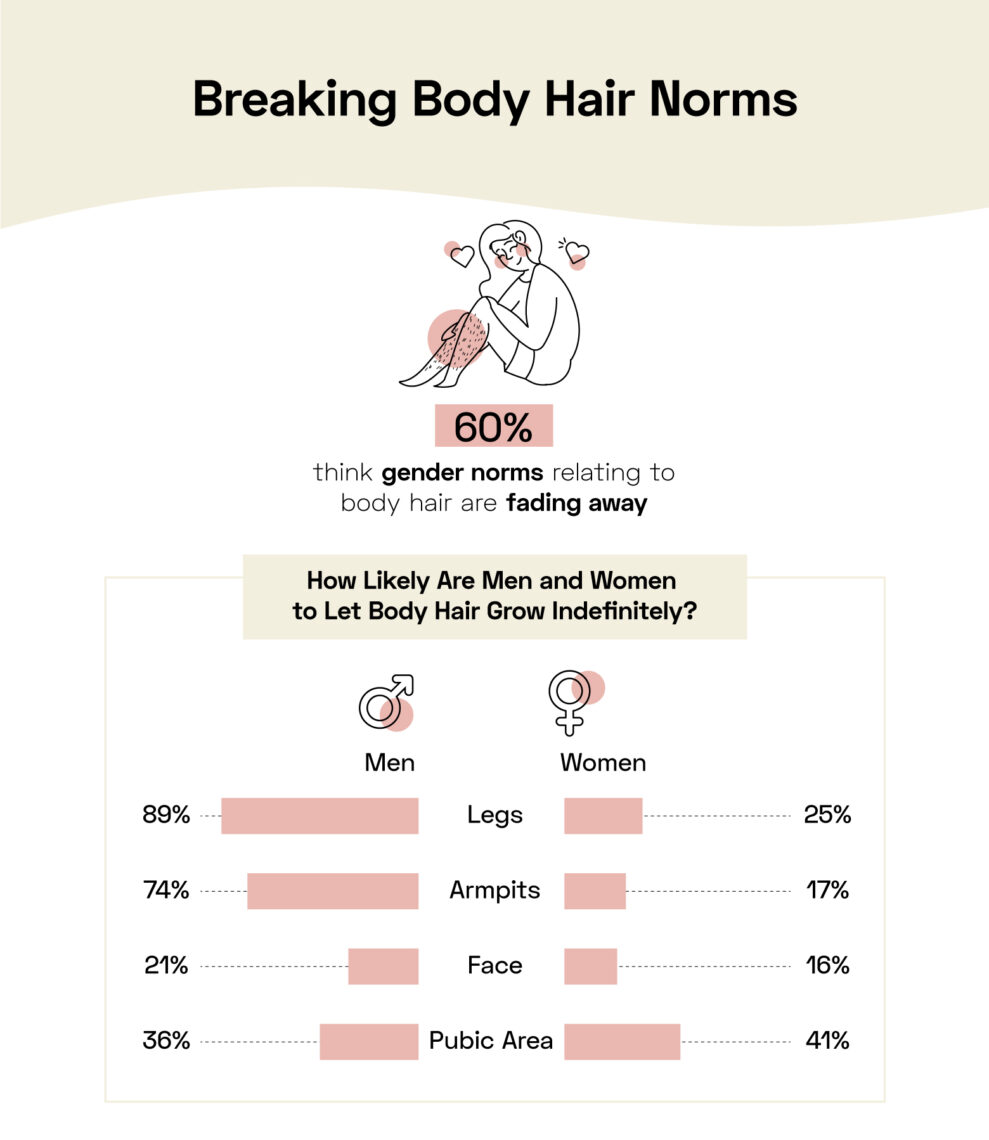It’s summer, which means breezier clothing and putting more of our skin on display. For many, thoughts of summer place body hair and grooming habits at the forefront of their minds. Like any beauty routine, comfortable body hair removal takes both knowledge and practice.
The many gender norms and societal standards concerning body hair create different expectations for different groups and a lot of uncomfortable questions. Since Google tends to be the go-to spot for quick answers to questions you don’t want to ask anyone in person, we wanted to see what body hair details people needed to know and what factors influence personal grooming standards.
So we conducted a Google search trends analysis of the most searched questions related to body hair in the United States. We also surveyed 1,261 Americans on their habits, opinions, and experiences when it comes to body hair and personal grooming. This post uncovers the details of what we discovered.
Key findings
- Overall, 48 percent of Americans remove or trim body hair at least once a week, but Gen Z removes body hair most frequently (54 percent).
- Seventy-one percent of respondents have used Google to research a sensitive topic about their body that they were uncomfortable asking another person.
- Searches about men’s preferences were four times more common than searches about women’s preferences when it comes to body hair.
- 60 percent think gender norms relating to body hair are fading away.
Body hair removal routine statistics
Legs, armpits, bikini area, eyebrows — it can feel like the list of areas on our bodies that we are expected to remove hair from is never-ending! To gauge how this affects Americans today, we asked our survey respondents what their body hair removal routines looked like.
According to our results, 48 percent of Americans remove or trim body hair at least once a week. Women are over twice as likely to than men, and younger generations (Gen Z and Millennials) are more likely to than Gen X or Baby Boomers. Nearly 50 percent of heterosexual people remove their body hair on a weekly basis, compared to 42 percent of the LGBTQ+ community.

The body parts that our respondents groom the most often include the pubic area, armpits, legs, stomach, and toes. When it comes to hair removal, the top three popular methods are shaving, tweezing, and hot waxing.
However, not all hair removal methods are created equal — respondents ranked tweezing, hot waxing, and shaving as the most irritating, and speaking of skin irritation, 41 percent of respondents have cut or injured their genitalia while removing hair. This incident was more common for women (43 percent) than men (39 percent).
How Americans experience and learn about body hair removal
Since we aren’t born knowing how to remove body hair, we dove into data on how Americans learn about body hair removal. Google offers a more comfortable avenue to find answers to uncomfortable questions. In fact, 71 percent of Americans have turned to Google for details on sensitive, body-related topics.
If we break that number down by gender, 77 percent of women and 64 percent of men have used Google to get answers to uncomfortable body questions. We also found that it is much more common for heterosexual people (87 percent) than LGBTQ+ people (66 percent).

When it comes to body hair specifically, 55 percent have searched online for information on body hair or hair removal. As you might imagine, many of these searches happened when respondents were young. The median age they first sought information online about body hair removal was 16.
Despite all this online research, the most common ways people learn about body hair habits, from most to least, include:
- Family members or guardians
- Through media depictions such as TV, movies, magazines, and advertisements
- Instructions by friends or acquaintances
- Online tutorials such as videos and articles
- Preferences or experiences with sexual partners
What are the most common Google searches about body hair?
When it comes to body hair, Americans want the most answers from these categories:
- Does shaving stimulate hair growth?
- Pubic hair: styles, trends, removal techniques
- Arm and armpit hair: gender norms and shaving
Many Americans are Googling the question “does shaving make hair grow back thicker?” They are also unsure how often they are supposed to shave their pubic hair, what it should look like, and how they should do it. The same is true for armpit hair.
When it comes to body parts, Americans Google the most about the following when performing grooming-related searches:
- Male genitals
- Female genitals
- Arms
- Armpits
- Legs
- Anus
- Nose
- Feet
- Back
- Unibrow
Americans are also Googling what men and women each prefer when it comes to body hair. However, searches about men’s preferences (such as “do men prefer women with pubic hair”) are more common than searches about women’s preferences.
Americans change their hair removal routine depending on their relationship status
Clearly, dating plays an important role in how often we remove body hair or if we choose to at all. So we asked our respondents a series of questions about the influence of romantic or sexual partners on their grooming habits.

Sixty-six percent of our respondents would adjust their body hair removal routine if a partner had a specific preference:
- Men (79 percent) were significantly more likely to change their routine to their partners’ preference than women (53 percent).
- Millennials (71 percent) were at least 9 percent more likely to change than the rest of the generations: Gen X (62 percent), Gen Z (61 percent), and Baby Boomers (51 percent).
- Heterosexual people (67 percent) were more likely to adjust their routine for their partners than LGBTQ+ people (62 percent).
Although some people are willing to adjust routines to appear more attractive to their partners, 58 percent of respondents indicated that they feel pressure to remove or trim body hair in order to do so. In this case, women (66 percent) feel much more pressured than men (50 percent), and that pressure was felt more by each generational group, with Gen Z feeling the most pressure.
Not only can individuals affect our routines but also, two percent change their body hair removal routine due to their relationship status. Women (48 percent) practice this more often than men (36 percent).
How is our personal grooming shaped by societal standards?
From our questions on dating and personal grooming, we can determine how social pressures regarding body hair manifest in one aspect of our lives. We wanted to know how Americans viewed these standards and pressures, so we asked a few questions about them.

As it turns out, even though gender norms and social pressures surrounding body hair still exist, 60 percent of Americans think that they are fading away. Of American women, 1 in 4 is willing to let leg hair grow indefinitely. Seventeen percent of women would let their armpit hair grow indefinitely, and 41 percent would not groom their bikini line.
Men enjoy less body hair stigma, but some still exist. While letting leg and armpit hair grow indefinitely is common for men, nearly 1 in 5 would not trim facial hair, and 36 percent would not groom their pubic area.
Despite all the pressures and questions, body hair removal routines are a personal choice. Whether you choose to shave, trim, tweeze, wax, thread, or none of the above, conducting your research with a trained professional is just as necessary as turning to Google in your time of need. Should you choose to remove body hair, get in contact with a waxing, threading, or other hair removal specialist to determine the best routine for you.
Methodology: Sources include both Google search trends data on body hair-related queries and a custom survey. The survey consisted of 1,261 American respondents. Data was collected on May 31, 2022. Forty-nine percent of respondents identified as male, 49 percent identified as female, and 2 percent identified as nonbinary or preferred not to say. 9 percent were Baby Boomers, 19 percent Gen X, 50 percent Millennials, and 22 percent Gen Z. Seventy-seven percent identified as heterosexual, 21 precent identified as LGBTQ+, and 2 percent identified as other or preferred not to say.






